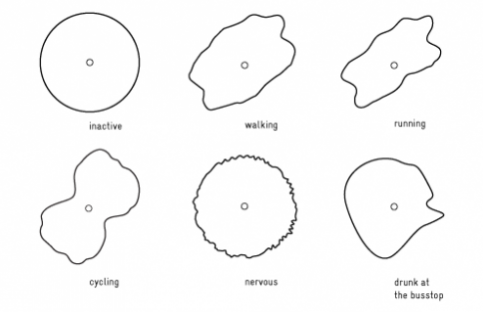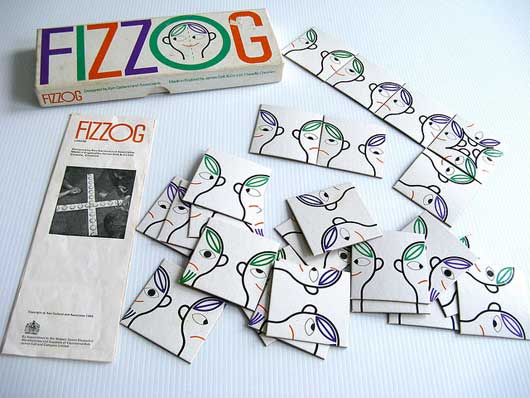One bit of consultancy we’ve done recently has been on new programme formats for mobile devices. It was a bit of a dash–just a few days thinking and writing, and a week to pull together communication material.
The brief was set by the BBC, and there was a progressive clause in the contract: S&W do the thinking, produce communication material and present to the project team there; the BBC can use any of the ideas without restriction, but we retain copyright on the report itself.
So while I could, in theory, copy and paste the report into this blog, it seems fairer to let the folks have a good run at developing the programme ideas themselves. I’ll talk a little about our approach and the deliverables instead.

Approach
The brief was this: what would successful programmes broadcast to mobile devices be? Put aside, for the moment, interactivity and on-demand programming.
(The BBC are looking ahead a little, as you can see.)
It seems to us that successful programming has to acknowledge three factors: the technological constraints, possibilities and expectations of the medium; the interests of the audience, and; the situation in which the programming and audience meet.
TV and radio have long histories as media and are well understood. For TV, the audience varies and so we have different channels to cater for demographics and interest (the situation is more-or-less fixed, though there are different TV channels for certain situations like gyms and bars). The situation of radio varies more, but again different stations cater for focused and backgrounded listening. And of course, programming content varies over the day for both TV and radio–whether it’s late night or mid afternoon is a great predictor of the audience and its constraints.
Programming for mobile devices, on the other hand, will land in unpredictable and highly variable situations… it’s a huge factor compared to the variability of the audience (and we can forget the constraints of the medium, for the moment, given it’s too new to have historical momentum).
We focused on finding a way to talk about the experience of different situations.
Two axes seem important:
- Mobility. Can the viewer/listener devote 30 minutes to this programme, or are they grabbing a few minutes that could end at any moment? That is: can they sit, or must they move?
- Attention. Must the viewer/listener background the programme because the situation demands attention, or can they concentrate?
Using these two axes we can break the situation of members of the audience down into four archetypical situations. The situation will demand…
- attention (but the viewer can control their movement): like being at work.
- nothing (the viewer can concentrate, and control their movement): home.
- mobility and attention: it’s like being out shopping.
- just mobility (but the viewer can concentrate on something else): on the bus.
(Incidentally, if persona are archetypal people, what would be a good word for archetypal situations?)
Given that – and the technological possibilities of the medium – we can take basic programme ideas and coerce them into being particularly good for the common audience situations, rather than just so-so.
We ended up with three main clusters of programme concepts:
- News (at various attention levels)
- Radio-like: High mobility and backgrounded
- TV-like: Low mobility and focused
Other factors come into play too, of course. Mobile devices – in particular mobile phones – are very intimate devices. We did some experiments with video and found the full face, straight to camera pieces were significantly better for these devices than presenters talking from behind a desk (Ze Frank‘s natural medium, perhaps). Oh, and the way people use their phones when they’re killing time… there’s some fascinating research there too.
But anyway, I don’t want to say much more. Just that frameworks like these aren’t a replacement for inspiration and thinking… it’s important to take them with a pinch of salt and be ready to discard them. What a framework is good for is as an explanatory tool, communicating the rationale of a nuanced concept through an organisation so that it can be developed and not reduced as it gets passed on.
Deliverables
Usually for this kind of consultancy we develop a slide deck in workshops with the client, or turn up and present. Since these programme concepts needed to transmit through the BBC, a different form was called for.
The image at the beginning of this post is of two of the three posters we delivered (each A2: 16.5 x 23.4 inches).
On the left, the poster discusses the background to the project, frameworks, and how the ideas could develop with interactivity and location awareness in the future. The poster on the right presents news and three other programme concepts (including a development of Ambient EastEnders).
Below is the third poster. It presents three more concepts, and some thoughts about successful forms of mobile video. All three look pretty tremendous printed large.

Experimental posters
Producing posters was an experiment for us–successful, I think. We were pleased to work with Alex Jarvis, who brought to bear his exceptional talent on the graphic design and illustration.
Plus we got to explore the idea of a poster as a kind of zooming user interface, where there are a series of self-similar levels of detail that progressively reveal as you move closer to the paper. So when you stand across the room, half the paper is legible with a title and a huge graphic. Moving closer, half of the rest (a quarter) become legible with a subtitle for the main segment and more concept titles. At the closest level of reading, the poster functions as a page of broadsheet. The next time around I’d like to investigate that more.
Thanks
I’d like to thank Dan Pike and the project team at the BBC for choosing to bring us in to work on this, and for their open approach. I look forward to seeing where the concepts are taken in the future!



















